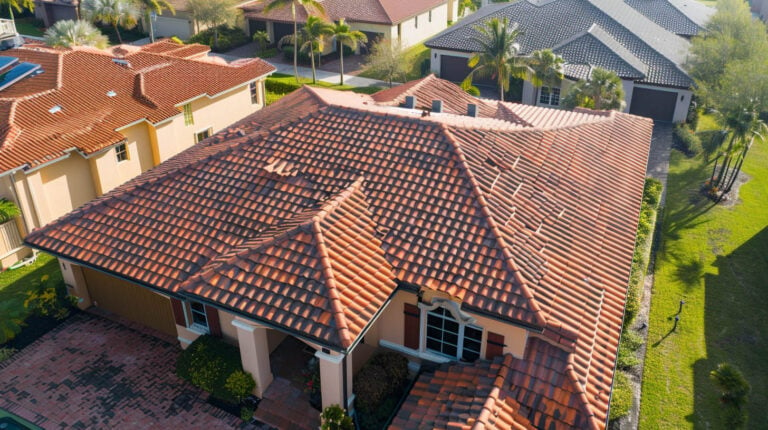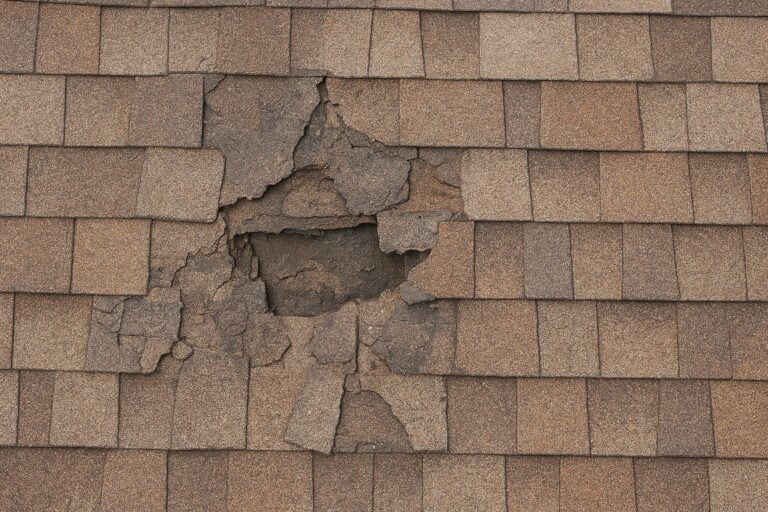In evaluating repairing vs replacing your roof, we present a detailed analysis to guide your decision-making process. As industry specialists, we consider a roofing system’s age, damage severity, material type, and long-term investment.
We begin with Steadfast Roofing serving Riverview, FL, ensuring every homeowner gains clarity on when to repair minor issues or invest in a full replacement.
Table of Contents
- 1. Signs Your Roof Needs Attention
- 2. Roof Age & Material Life Expectancy
- 3. Repair: When It’s Cost‑Effective
- 4. Replace: When That’s the Smarter Long-Term Decision
- 5. Lifecycle Cost Comparison
- 6. Energy Efficiency & Performance Gains
- 7. Financing & Value Boost
- 8. Making the Final Call
- Conclusion
1. Signs Your Roof Needs Attention
Visible Damage
- Missing or broken shingles after storms.
- Curling, blistering, or oxidizing shingles, indicating age.
- Granule loss from gutters or downspouts.
- Multiple patch repairs in different locations — a red flag.
Water Intrusion
- Stains on the ceiling, drip lines, or attic moisture.
- Mold or rot in rafters or decking.
- Sagging roof deck, a severe structural concern.
Flashing & Leak Points
- Rust or cracked flashing around chimneys, vents, and skylights.
- Loose or damaged counter-flashing is a prime source of leaks.
2. Roof Age & Material Life Expectancy
Every roofing material has an expected service life:
| Material | Expected Lifespan |
| 3‑Tab Asphalt Shingles | 15–20 years |
| Architectural Asphalt Shingles | 20–30 years |
| Metal Roofing | 30–50 years |
| Tile or Slate | 50+ years |
If your roof is in its final years—around 80–90% of its expected life—major repairs yield diminishing returns.
3. Repair: When It’s Cost‑Effective
Repairing is ideal when:
- Damage is local (e.g., one small leak, a few blown-off shingles).
- The overall roof is relatively young (<10–15 years for asphalt).
- The deck and underlayment remain solid.
Common repairs:
- Shingle replacement
- Flashing resealing
- Underlayment patching
- Minor decking restoration
Repairs typically range from $150–$2,500, depending on scope.
Benefits of Repair
- Quick turnaround—often same-day fix.
- Lower immediate cost.
- Maintains existing warranty on unaffected sections.
Considerations
- May only delay issues.
- Multiple spot repairs can appear patchy.
- Underlying wear may accelerate future deterioration.
4. Replace: When That’s the Smarter Long-Term Decision
Opt for replacement if:
- Roof is near or past its service life (e.g., 20+ years for asphalt).
- Multiple leaks or widespread damage exist.
- Structural integrity (decking, rafters) is compromised.
- Energy inefficiency (e.g., heat gain, ice damming) is persistent.
Advantages of Replacement
- Complete restoration—no patches.
- Modern materials can offer enhanced durability and insulation.
- Extended manufacturer warranties (25–50 years on shingles).
- Boosts home resale value and curb appeal.
5. Lifecycle Cost Comparison
| Scenario | Initial Cost | Lifespan | Annualized Cost |
| Spot Repair | $300 | 2–3 years | $100–150/year |
| Partial Replacement | $5,000 | 15 years | ~$333/year |
| Full Replacement | $12,000 | 25 years | $480/year |
A full replacement may offer better value and peace of mind over time, especially for aging roofs.
6. Energy Efficiency & Performance Gains
New roofing systems can significantly improve energy performance:
- Higher R-values through updated materials.
- Cool roof options reflect up to 70% solar energy, cutting cooling loads.
- Proper ventilation installation prevents issues like ice dams and moisture buildup.
7. Financing & Value Boost
While roof replacement is a major expense, options exist:
- Low-interest or zero-interest financing through roofing professionals.
- Possibility of insurance or warranty assistance for damage caused by storms or fire.
- An upgraded roof can offer 2–5% home value appreciation and expedite the sales process.
8. Making the Final Call
Consider this structured decision path:
- Inspect Your Roof: Engage a qualified professional for a full assessment.
- Document All Issues: Photos, extent of damage, and moisture presence.
- Evaluate Costs vs. Lifespan: Weigh spot repair cost against annualized replacement cost.
- Check Material Life: Does your roof exceed 80% of its expected term?
- Get Multiple Quotes: From reputable companies with verifiable credentials.
- Determine Immediate vs Long-Term Value: A cheaper repair might delay the inevitable replacement.
Conclusion
Through rigorous evaluation of damage, roof age, materials, and cost-effectiveness, we help homeowners determine whether to repair or replace. Repairs suit minor issues on younger roofs, while replacement offers better value and reliability for aged, compromised systems. A proactive, informed strategy prevents small concerns from escalating, protecting both your home and investment for decades.
Read one of our latest blogs: “Comprehensive Roof Inspection Checklist for Homeowners”.




